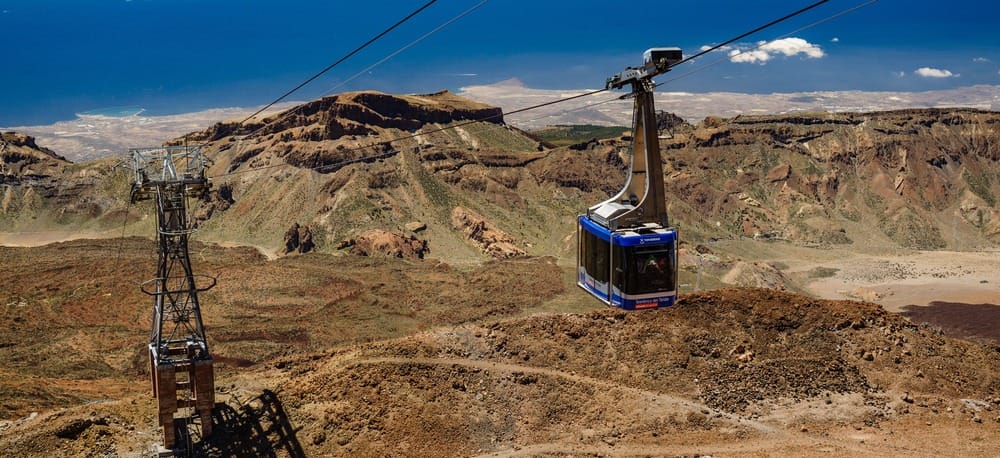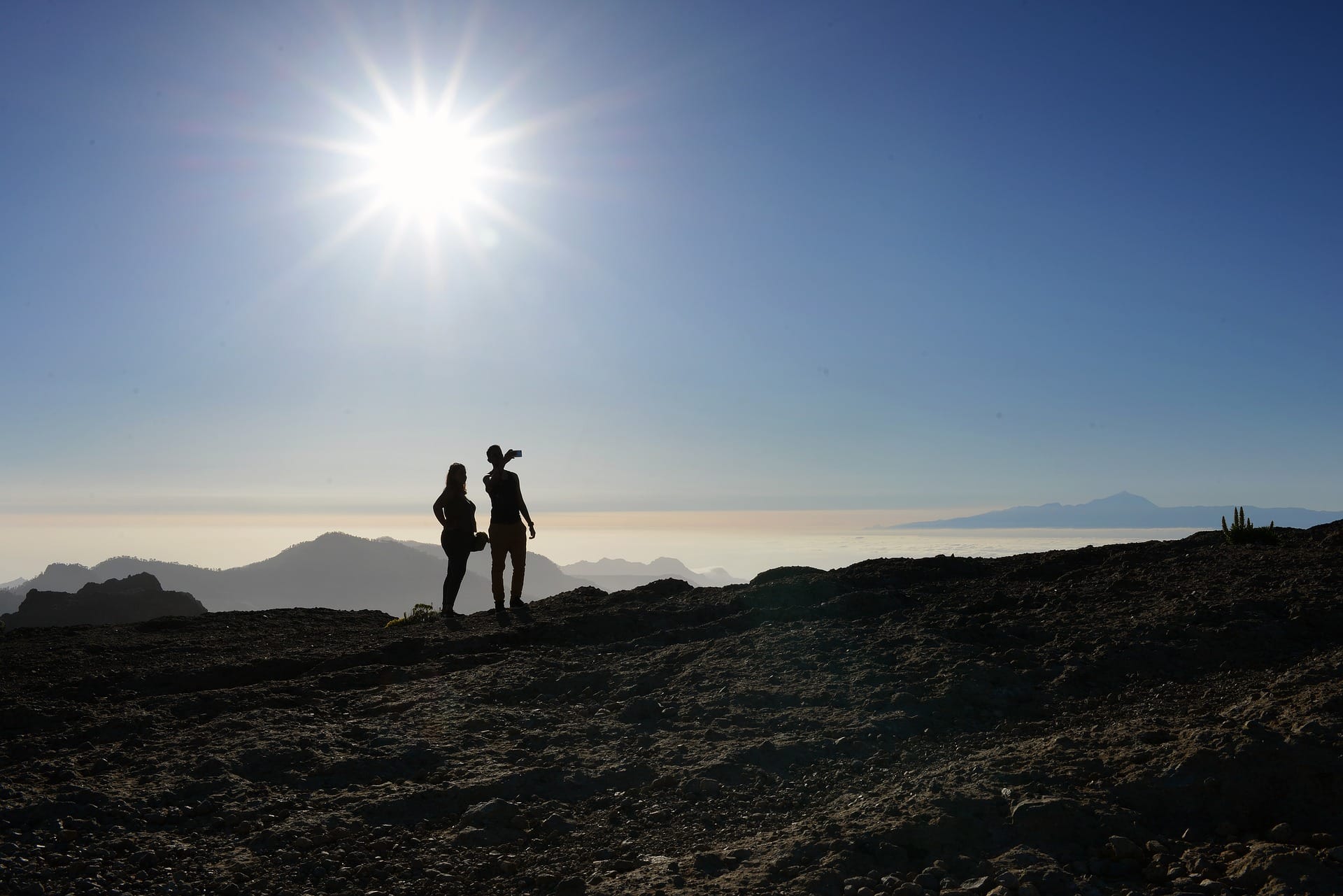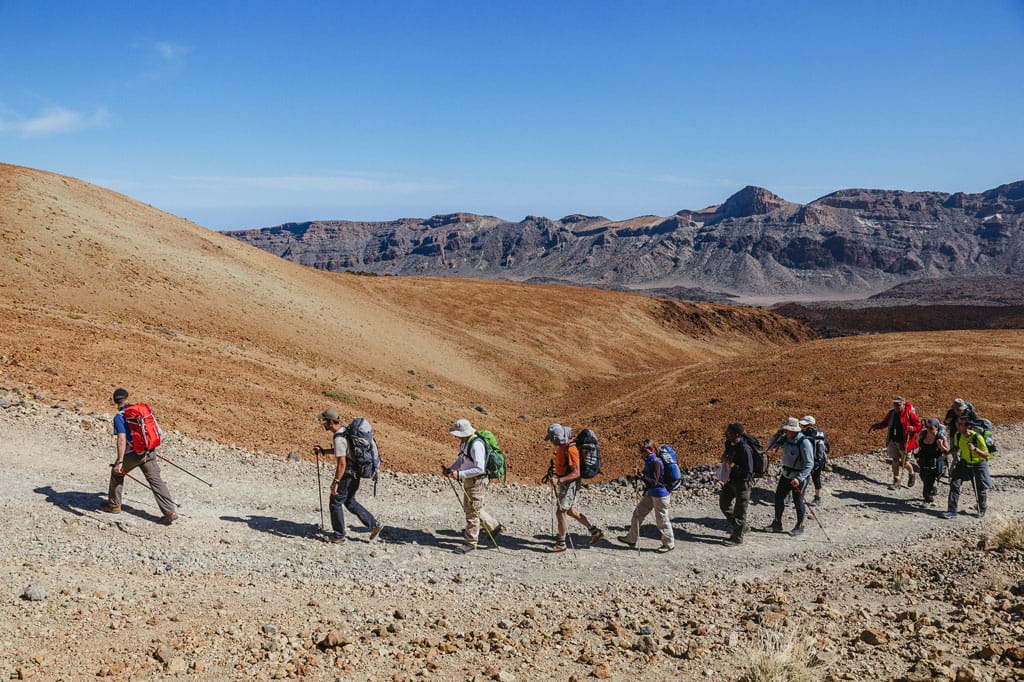El Teide: one of a kind
Let me tell you an incredible story about the Teide.
The first inhabitants of Tenerife were the Guanches. Legend has it that they were afraid of a devil, called Guayota, who lived inside the volcano Teide. One day, the devil decided to imprison Magec, the God of Light and Sun, plunging the world into darkness ... Only by appealing to Achaman, the Supreme God, could the Guanches hope for the return of Magec, the light and the sun.
In a fierce battle with Guayota, Achaman managed to defeat the devil and threw him back into the volcano, sealing the summit of Teide with a sugar cap, meaning sugar-covered, white peak that is crowning the mountain.
Since then, Guayota has remained in the volcano, but to remind everyone that he is still alive, he spits out lava and rocks from time to time... The Teide National Park includes the entire area surrounding the volcano, which in total covers an area of 189.9km2 and receives more than 4 million visitors each year. In 2007, it was designated by UNESCO as a World Heritage Site.
This national park is a real geological treasureThe volcanic landscape, formed by marvellous volcanic landscape forms by lavas through time, which are commonly known as lunar landscapes. They take tourists to another dimension, making them believe that they are no longer on the same planet. Due to the particular climatic conditions, wildlife has sprouted in the lava fields, although the environment is quite hostile.
How tall is Mount Teide?
Teide is 3,718 metres high above sea level, which means that Teide is Spain's highest peak! The volcano, which is still active, is located in the centre of Tenerife, one of the eight islands of the Canary archipelago.
Although they are located in the Atlantic Ocean, close to the Moroccan coast, they are part of Spain and therefore part of the European Union. Sometimes called "the islands of eternal spring Due to the particular climatic conditions throughout the year, they are home to numerous endemic species, which live in harmony with the local inhabitants.
On the one hand, the province of Santa Cruz de Tenerife brings together the western islands: El Hierro, La Gomera, La Palma and Tenerife. On the other hand, the province of Las Palmas is made up of the eastern islands: La Graciosa, Lanzarote, Fuerteventura and Gran Canaria.
Which plan to follow on your holidays?
Don't miss the Experience Teide peak excursion: on foot or by cableway
Get to know the most visited national park in Europe and climb the highest peak in Spain. Exceed your limits on this excursion of ascent to Teide peak with permits.
If you want to live a unique and environmentally friendly experience, and also get to know the Teide National Park with a Senda guide, which has been declared a World Heritage Site by UNESCO, then this is the place for you. Unesco World Heritagebook your place for a guided visit to Teide with permits.
How to climb Mount Teide?
There are two ways to climb to the summit of Teide:
- Climbing Mount Teide in cable carfast and comfortable or hiking,
- Climbing Mount Teide on your ownstarting in the Cañadas del Teideonly for those in good physical shape and with no time limit.
If you want to enjoy a Senda experience and climb the Teide, the most visited national park, don't hesitate to choose our unique experience to visit the Teide.
Climb to the top of Mount Teide by cable car
One option is to climb to the summit of Mount Teide by cable carFrom the base station of the cable car, located at the foot of Mount Teide at an altitude of 2,356 metres, to the top station known as La Rambleta, located at an altitude of 3,555 metres.

The trip lasts only 8 minutes. The Teide cable car operates as a taxi with a maximum capacity of 44 people, standing for the entire journey. The Teide cable car operates from 9:00 am to 17:00 pm with access for more than 200 people to this wonderful protected natural area.
The base station del Teide has a rest area and a cafeteria service, where you can enjoy a delicious bar, a mixture of flavours while enjoying the incredible views of the Teide National Park.
However, the upper station It has a small hall with toilets, WIFI and the highest public telephone in Spain. It is advisable to be prepared for changes in temperature and to take warm clothing. This place is the starting point for different routes.
We recommend that you book your tickets in advanceYou can book online or by telephone to avoid queuing. We consider that the best time to access the cable car is at the following times before 11:00 amAfter that time, the car park starts to fill up and it's usually an odyssey.
In addition, it is important to keep an eye on the weather forecast: on windy or rainy days, the cable car may not operate. To make sure, take a look at the weather forecast and it will show you whether the cable car is open or not.
Please note that the cable car ticket does not include the permit to access the peak of Teide.
Hiking routes through the Teide National Park
Once you reach La Rambleta at an altitude of 3,555 metres, you can book in advance three hiking routes that start from this point:
- Route to the Teide Crater (Telesforo Bravo nº10). This route will lead you to the highest peak in Spainwhere you can enjoy the best landscapes in the world. The most beautiful thing of all is that on clear days you can see the nearby islands of El Hierro, La Palma, La Gomera and Gran Canaria from the summit.
- La Fortaleza Viewpoint Route (nº11). A path where we will be able to observe the northern part of the island of TenerifeThe observatory is an observatory where the focus of attention is the Orotava Valley and the mountain range of La Esperanza together with the Anaga massif.
- Pico Viejo Viewpoint Route (no. 12). Thanks to the viewpoint of Pico Viejowe will be able to see the beautiful zone south of the island of TenerifeThe great caldera of the Cañadas del Teide, the scenic traces of its volcanic eruptions throughout history, the crater of Pico Viejo, the Roques de García and the Guajara Mountain.
For environmental reasons access to the peak is regulated. apply for permission to climb issued by the National Park Administration. Remember to apply for a permit in advance and free of charge at www.reservasparquesnacionales.es
Generally, to complete such an incredible experience on the highest volcano in the world, we recommend spending the night at the Altavista Refugelocated at 3,250 metres. An adventure that will allow you to touch the stars.
It is the Teide's only refugewith a capacity for 54 people, your stay is limited to one night per person. At Refugio Altavista you can enjoy hot drinks and water, as well as the possibility of heating food. It is important to note if you book at the Teide refuge and go up before 9:00 am, you don't need the permit to access the peak.
What to do on Teide
Give a a walk through the lunar landscape is a once in a lifetime experience that will change you forever! Crossing a 17km. long caldera by car, enjoying unique wildlife, such as beautiful flowers like tajinastes or Teide daisies, and you might be lucky enough to see some endemic birds! If you like hiking, look no further!
The national park offers many trails that have all the difficultiesFrom very easy trails to long and difficult trails for experienced hikers. From the top of the volcano, you will enjoy a breathtaking panoramic view of Tenerife and, in clear weather, the other islands of the archipelago will complete this incredible landscape. Not forgetting that stargazing is also a staple if you visit the national park!
Don't miss the astronomical observation activity in Cañadas del Teide.



Add comment